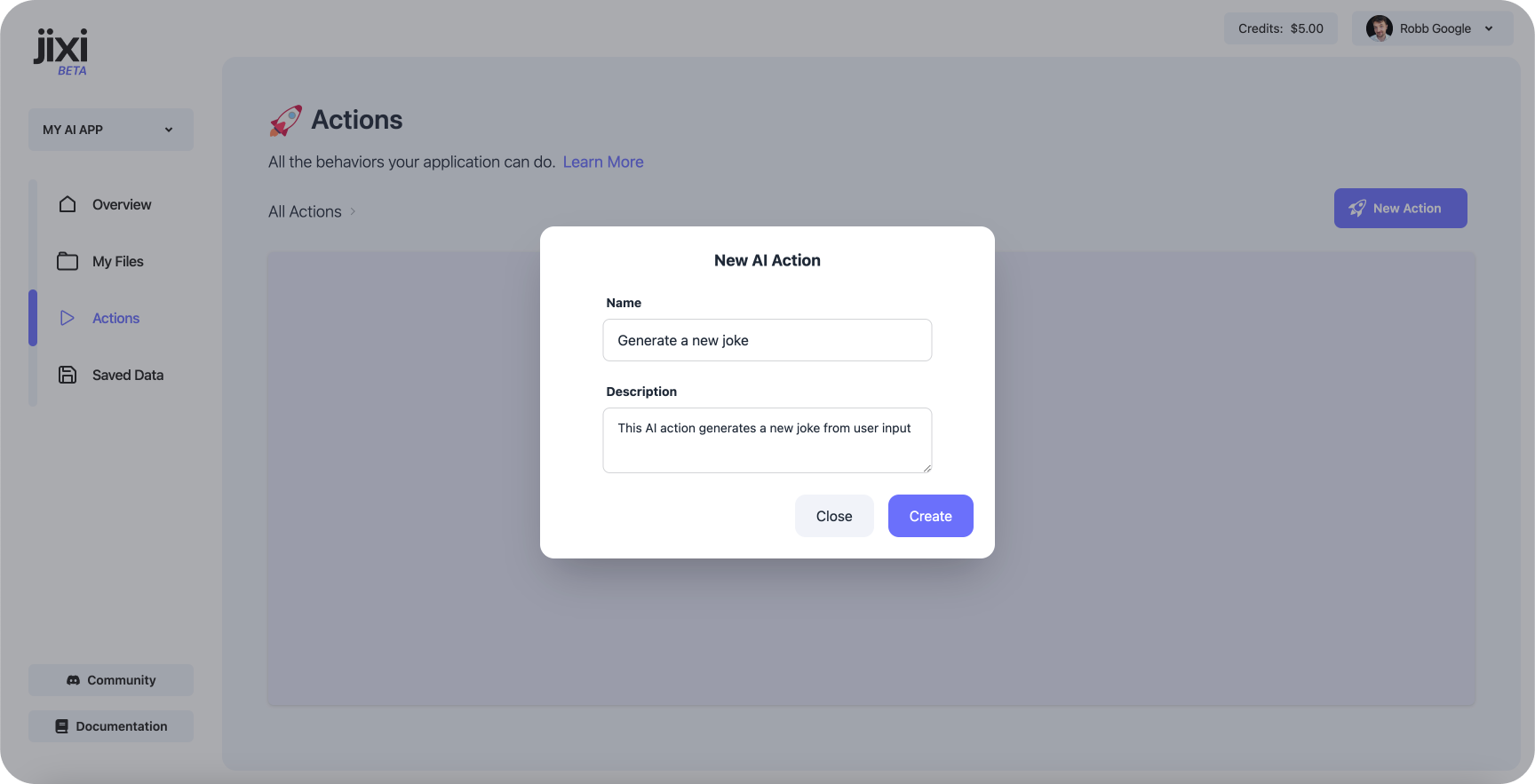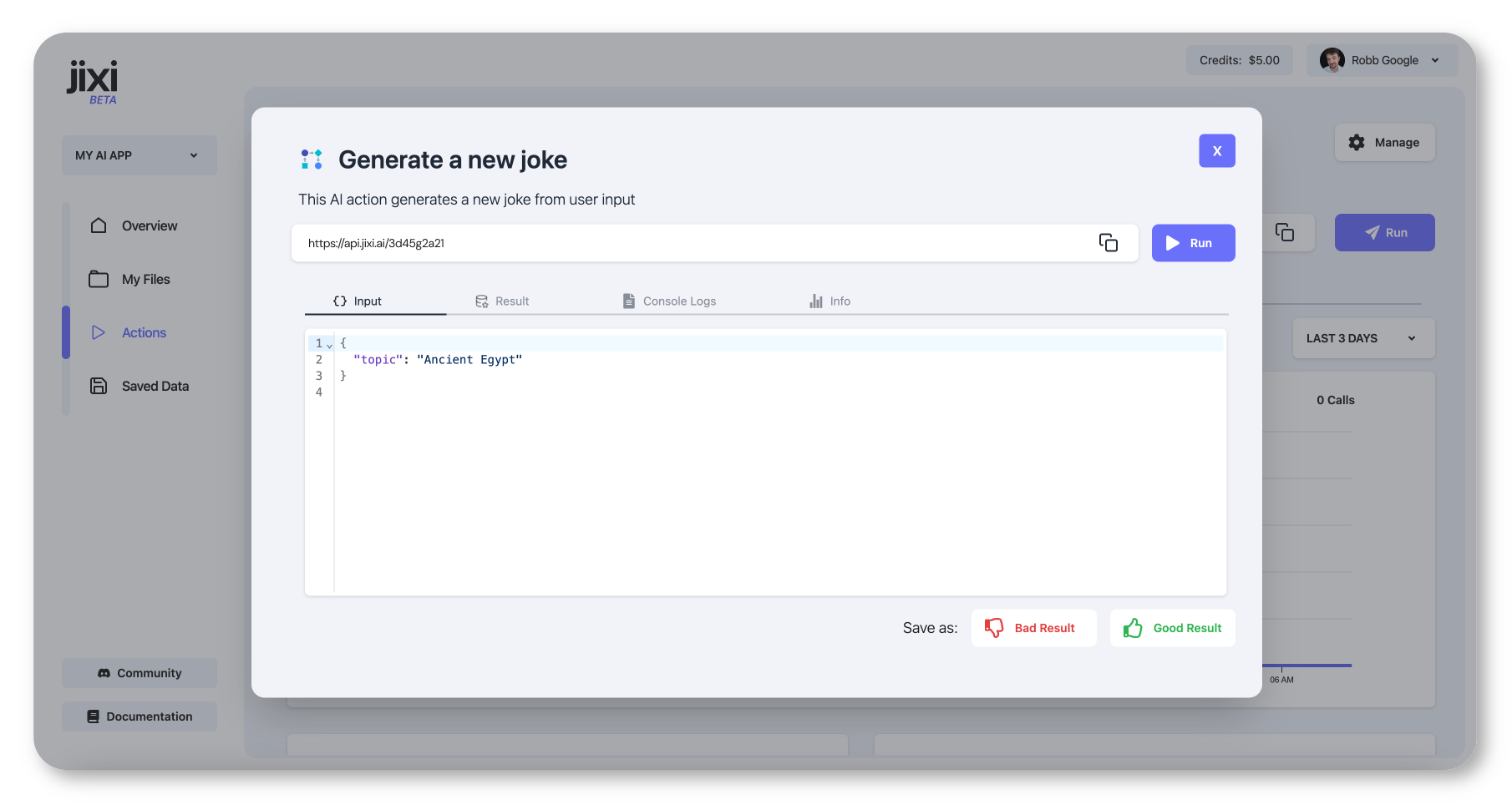Actions
Actions are building blocks for an AI system. Each action has its own API endpoint, so they can be called from third-party applications. Actions maintain their own analytics, have their own code, and maintain their own confidence score.
Create your first Action
To create an action, navigate to Actions on the side navigation bar. Click the New Action
button. Give your action a name and description, and click Click

Action Page
Click on the new action to see your new action's overview page.

Analytics: The action Analytics view gives you an overview of key results for your
action including Total API Call Average Response Time and Average Cost Per API Call.
Analytics are tracked from API calls, not from running actions through the Jixi app. This is to help separate events from development, and maintain accuracy and quality.
Code: The action Code view provides a built-in code editor to define your Action's
behavior. It uses Javascript and provides an integrated SDK.
Confidence: Each action has a Confidence Score which represents the expected quality of response. Because AI can be unpredictable, confidence scores give you an estimate of how much to trust a generated response.
Confidence scores are determined through human-feedback, by rating responses as Good or Bad
results.
For more information see Confidence Scores
Logs: The logs of your action from API calls.
Update the Code
Navigate to your action's Code section and replace the default code with:
async function execute(userInput) {
const config = {
prompt: "Write me a funny joke about " + userInput["topic"],
response: {
setup: "string",
punchline: "string",
},
}
// Generate with AI
const joke = await jixi.askAI(config);
return joke;
}
This action will create a new joke about any topic given. Jixi auto-saves as you type.
Run the Action
Click the Run button to bring up the Run Menu. The Run Menu gives you the opportunity to
test your action with different inputs, view results, logs, and verify analytics.

Input: This section helps to test actions under different user-input scenarios. When applications
call the Action's API, they can include a request body
This body is passed to our action as a userInput parameter.
If you are creating the Input from end users, like we're doing here, It's good practice to test
your action with a large variety of inputs to make sure it behaves correctly. You never know what
your users will ask for!
Replace the action's Input with:
{
"topic": "Ancient Egypt"
}
Click RUN
Results: This section is what the action will return. It's the information your application
will receive from calling the Action. Once we have a result, we can save it as either a Good or
Bad result. This will build up our Action's Confidence Score.
Logs: This section shows logs from the Action, including errors and anything we've logged with
console.log("This is a log");
Logs can help you develop actions and verify data. Try adding some logs to your Action's code and re-running!
Info: This section provides analytics results for running this action, including the response time and cost.